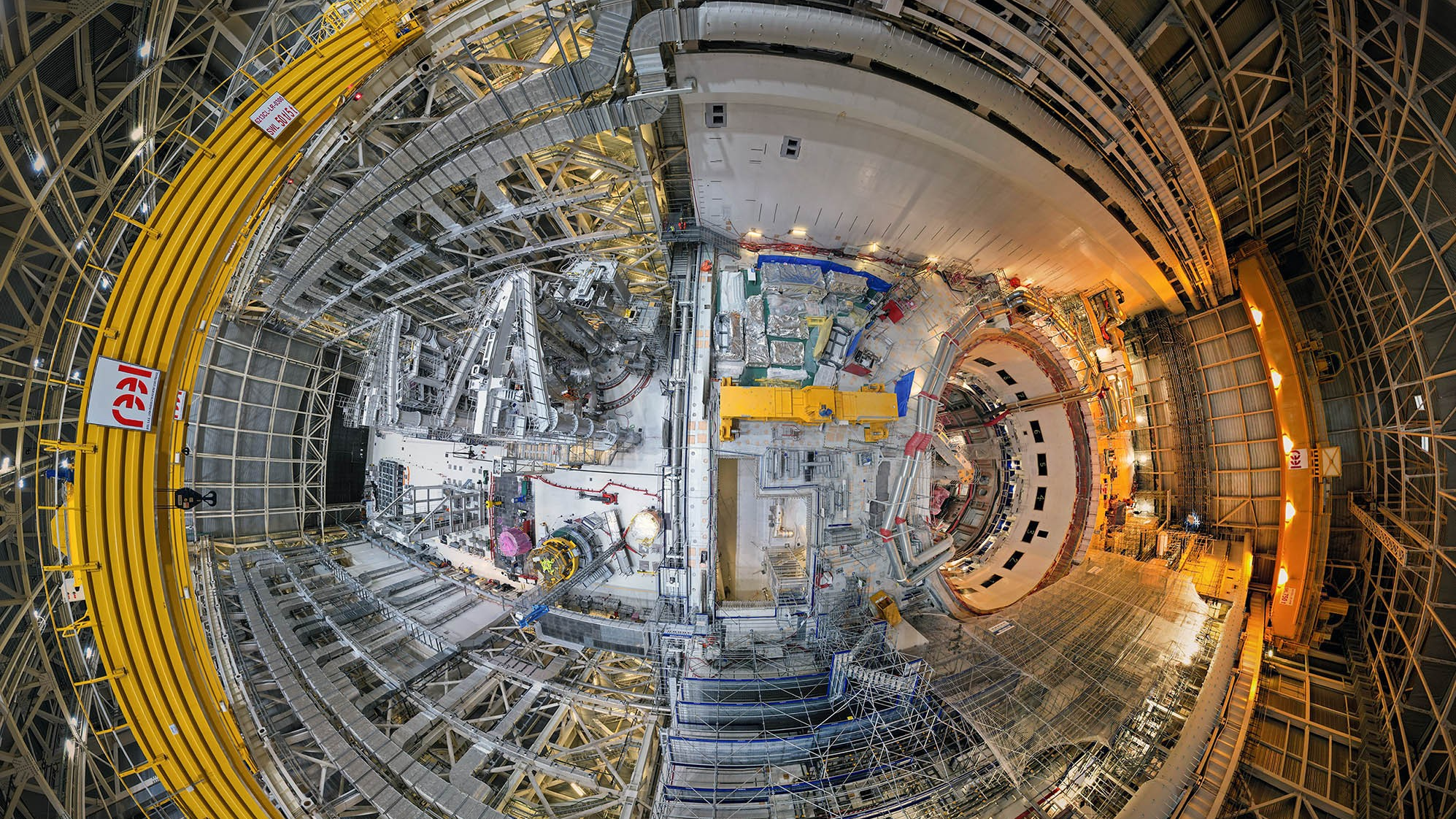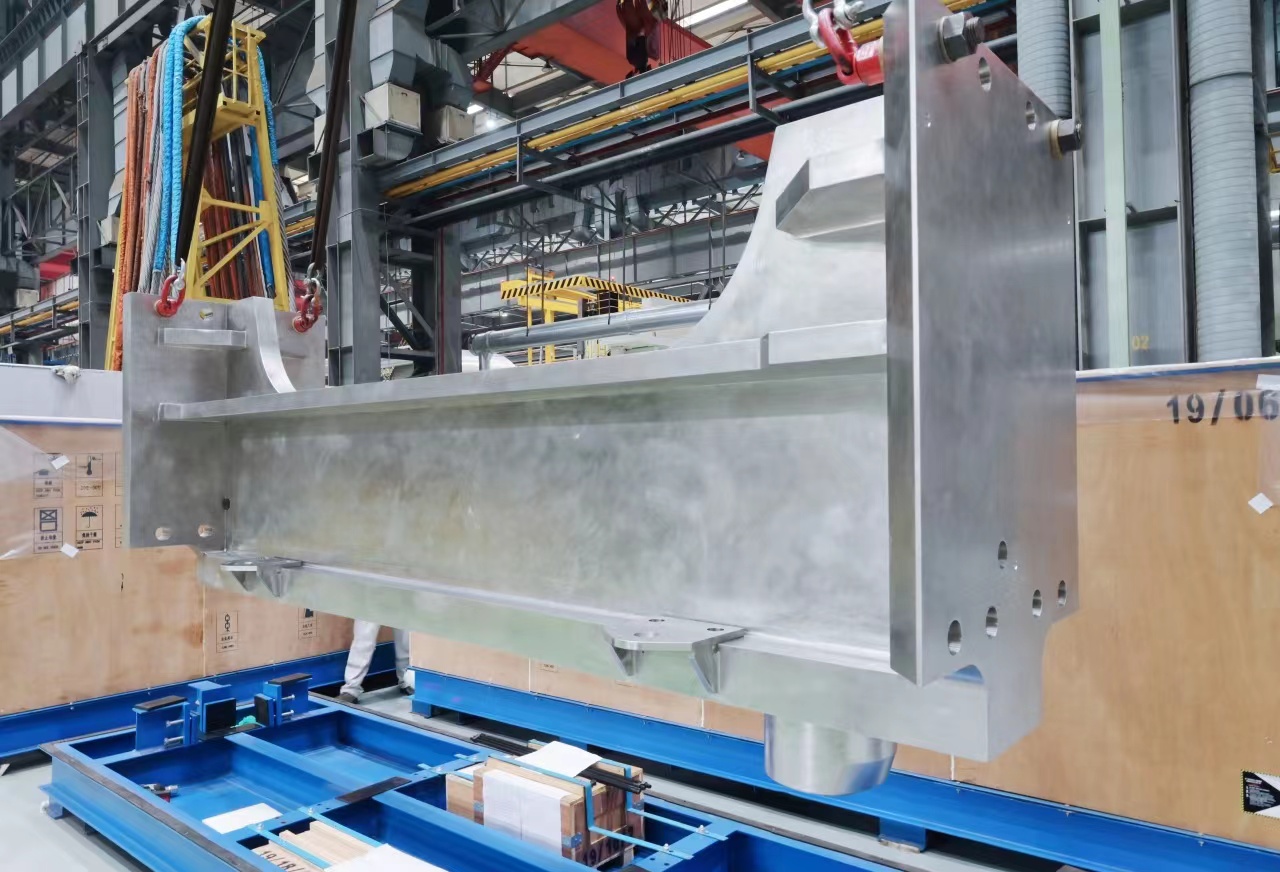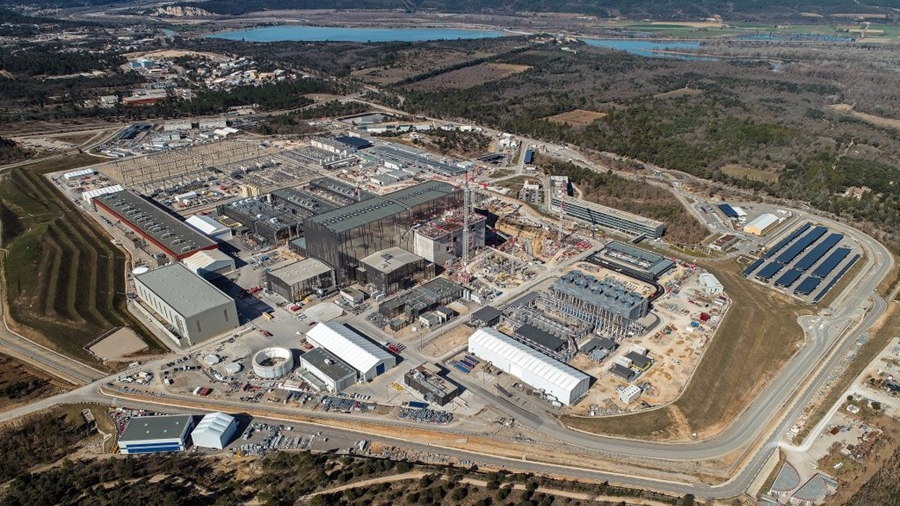
The ITER project under construction, Saint Paul-lez-Durance, southern France. /Website of ITER project
The ITER project under construction, Saint Paul-lez-Durance, southern France. /Website of ITER project
China has completed construction of the last batch of magnet-supporting products for the International Thermonuclear Experimental Reactor (ITER) project, and shipped the final consignment to France from Guangzhou City, south China's Guangdong Province on Friday.
The ITER, known as the world's biggest "artificial sun," is an international nuclear fusion experiment based in France and one of the largest and most important international energy projects in the world.
China, a partner in the project, is responsible for the development and manufacturing of the whole magnet supporting system, a key component in the ITER.
The completion of the final batch of the magnet-supporting products is a fundamental step toward the ambitious project's first plasma, also the first operational test, which is scheduled for 2025.
The system, weighing more than 1,600 tonnes, is one of the core structural safety components of the ITER and the first fundamental part to enter into a factory for installation. Its quality and delivery are related to the operational stability and assembly progress of the whole project.
Since 2018, the developer, the Southwestern Institute of Physics under the China National Nuclear Corporation (CNNC), based in Chengdu City, southwest China's Sichuan Province, has delivered over 30 batches of the product to the ITER project, according to the institute.
"The magnet supporting system is mainly to support the superconducting magnets in the magnetic confinement nuclear fusion, which is also like a backbone of a house," said Li Pengyuan, leader of the magnet supporting project.
It plays a role in bearing the load and counteracting all the electromagnetic forces in order to ensure the safety of the ITER reactor, Li added.

The magnet supporting product delivered to the ITER project. /CNNC's Southwestern Institute of Physics
The magnet supporting product delivered to the ITER project. /CNNC's Southwestern Institute of Physics
Progression of ITER
Launched in 1985, the fusion project has been built by seven members, namely China, the European Union, India, Japan, South Korea, Russia and the United States.
The primary objective of the ITER is to investigate and demonstrate burning plasmas – plasmas in which the energy of the helium nuclei produced by the fusion reactions is enough to maintain the temperature of the plasma, thereby reducing or eliminating the need for external heating.
The building program works of the project have now reached 85 percent completion, according to Li.

The site of the ITER project, Saint Paul-lez-Durance, southern France. /Website of ITER project
The site of the ITER project, Saint Paul-lez-Durance, southern France. /Website of ITER project
China's contribution to megaproject
China joined the megaproject in September 2007, and its manufacturing tasks cover most of the important components of the ITER device, such as the superconducting magnet system, large-scale coil power supply system and diagnostic system, according to Li.
China has been involved in the research and development of some core technologies and undertaken 18 tasks, accounting for 9 percent of the contribution, according to Li.
Over 100 Chinese scientists were sent to France to participate in the project. "Now we are at the forefront of the world in many fields, including superconducting magnets, material technology, power supply technology and control," said Li.




